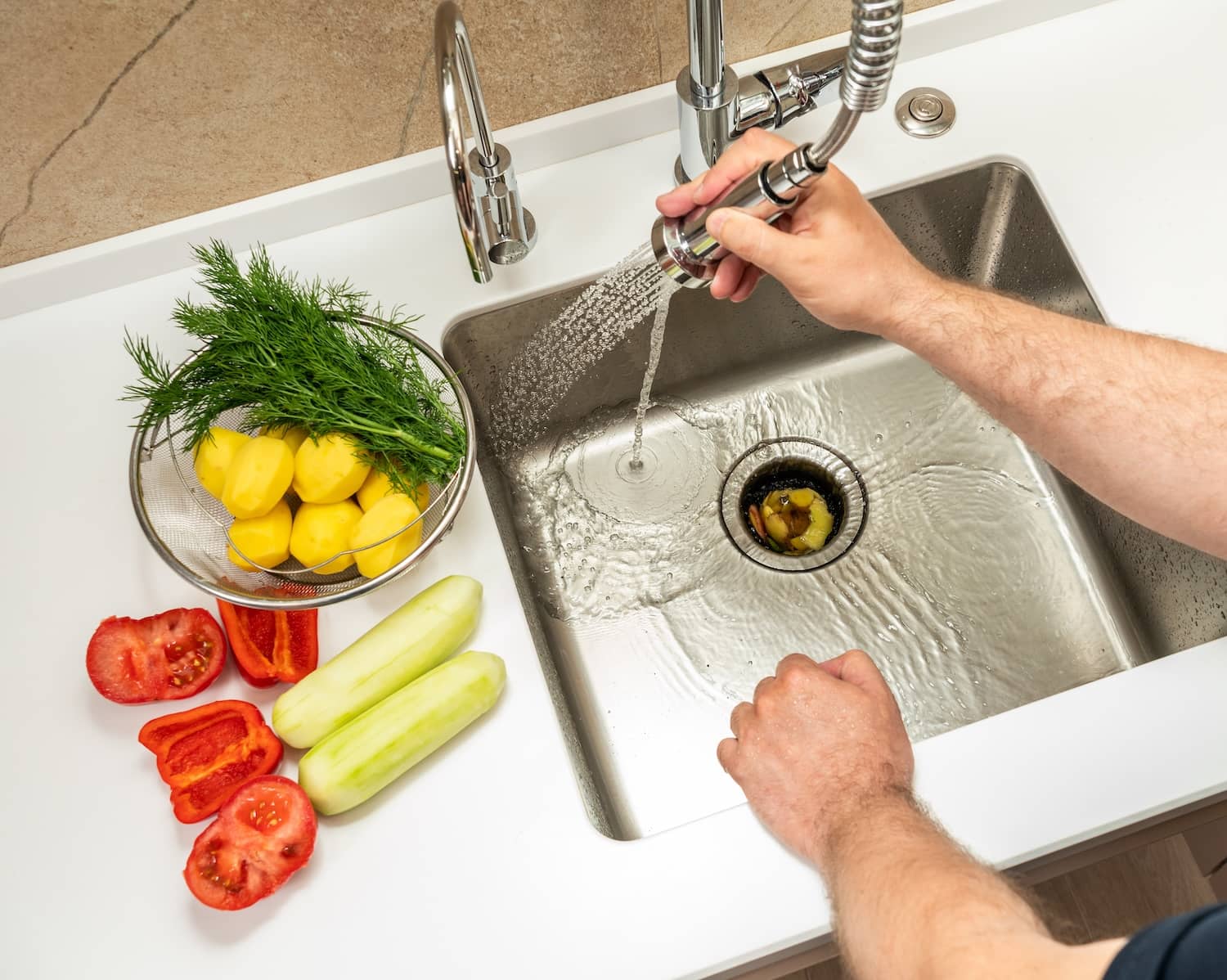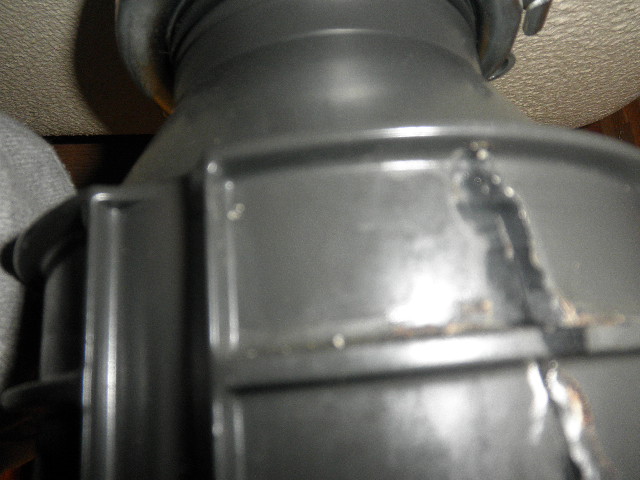Step-by-Step Techniques for Repairing a Leaky Garbage Disposal
Step-by-Step Techniques for Repairing a Leaky Garbage Disposal
Blog Article
The writer is making several great points on the subject of The Handy Guide To Fixing Your Garbage Disposal Leaking in general in this great article followed below.

Waste disposal unit are important kitchen devices that assist in throwing away food waste effectively. Nonetheless, a dripping waste disposal unit can be an aggravating and messy problem to deal with. The good news is, several leaks can be taken care of conveniently with a few simple steps. In this post, we will certainly talk about exactly how to deal with a leaking waste disposal unit successfully.
Intro
Garbage disposals are installed under kitchen area sinks and are made to shred food waste into smaller items, allowing it to go through the pipes system quickly. While these gadgets are usually dependable, leakages can happen gradually as a result of wear and tear, loosened connections, or damages to the system.
Usual Causes of Leaks in Trash Disposals
Worn Seals and Gaskets
Seals and gaskets play a crucial function in stopping water from dripping out of the garbage disposal. Over time, these elements can deteriorate, leading to leaks around the disposal system.
Loose Links
The connections in between the garbage disposal and the pipes system can come to be loose with time, causing water to leakage out during operation.
Cracks or Holes in the Disposal Device
Physical damages to the waste disposal unit, such as splits or openings in the real estate, can also lead to leakages.
Determining the Resource of the Leakage
Before attempting to deal with a dripping waste disposal unit, it is necessary to determine the source of the leak. This can generally be done via aesthetic inspection or by conducting basic examinations.
Visual Assessment
Check the waste disposal unit system thoroughly for any type of indicators of water leakage. Pay attention to areas around seals, gaskets, and connection points.
Examining for Leaks
One means to test for leakages is by running water via the disposal system and looking for any type of visible indications of leak.
Devices and Materials Needed for Repairing a Leaking Waste Disposal Unit
Prior to starting the repair process, gather the necessary tools and products, consisting of a screwdriver, adjustable wrench, plumbing's putty, replacement seals or gaskets, and epoxy or patching material for repairing splits or openings.
Step-by-Step Overview to Dealing With a Leaking Garbage Disposal
Switch off the Power
Before trying any type of repair work, make sure that the power to the garbage disposal unit is switched off to avoid the threat of electrical shock.
Find the Leakage
Determine the precise area of the leakage and figure out the cause.
Tighten up Links
Utilize a wrench to tighten up any type of loose links between the disposal system and the plumbing system.
Change Seals or Gaskets
If the leakage is due to used seals or gaskets, remove the old elements and replace them with new ones.
Patching Fractures or Holes
For cracks or openings in the disposal system, use epoxy or a suitable patching material to secure the broken area.
Testing the Garbage Disposal After Repair Service
Once the fixing is full, examine the waste disposal unit by running water via it to ensure that the leak has been resolved.
Preventive Upkeep Tips to Avoid Future Leaks
To avoid future leakages, it is necessary to execute regular maintenance on your waste disposal unit. This includes keeping it clean, avoiding placing non-food items or difficult items down the disposal, and occasionally checking for leakages or other concerns.
Verdict
In conclusion, taking care of a dripping waste disposal unit is a fairly straightforward process that can be finished with basic devices and products. By complying with the steps detailed in this write-up and practicing preventative maintenance, you can maintain your waste disposal unit in good working condition and stay clear of pricey repair work in the future.
What to Do About a Leaking Garbage Disposal
A leaking garbage disposal often goes unnoticed until you confront a sopping cabinet, a foul-smelling puddle, or an audible drip-drip-drip from the unit. The fix can be frustrating, too, because the leak can stem from a number of components in the system. Fortunately, with a little sleuthing, you can zero in on the leak and—depending on the exact location—stop the icky oozing and repair the component that caused it. Worst case scenario, if it turns out that the garbage disposal must be replaced, installing a new one is a reasonable do-it-yourself task for those with basic plumbing skills. Read on to keep the cash you’d otherwise hand over to a pro.
Prepare to find the leak
Prior to testing the garbage disposal for leaks, unplug it at the wall outlet and turn off the power from the breaker box to prevent electrical shock. Then insert a watertight sink stopper into your sink drain and wipe the unit dry with a clean cloth. In any handy container, mix a few drops of food coloring into a few cups of water, and pour the dyed water onto the sink stopper to help you locate the leak.
Investigate the source
the top, where the disposal meets the sink drain the side, where the dishwasher hose or main drain pipe connects to the disposal or the bottom of the unit Inspect each of these locations while gliding a light-colored rag over the unit; the dyed water will readily show on the rag and reveal the location of the leak. If a leak isn’t immediately apparent, remove the sink stopper and pour a few more cups of dyed water down the sink drain, then check for leaks again. Leaks near the top of the unit are more likely to show themselves while the sink is plugged, while side and bottom leaks are more noticeable while the sink is unplugged.
The metal sink flange that sits directly inside the sink drain is typically sealed around the top with plumber’s putty (a clay-like sealant) and then secured from under the sink with bolts. If the plumber’s putty deteriorates, or the bolts loosen, the flange can no longer form a watertight seal between the sink drain and the disposal—which could cause a leak at the top of the unit.
To reseal the leaky flange, you must first detach the garbage disposal. Start by loosening the screws securing the main drain pipe to the disposal, then loosen the screws in the metal clamp securing the dishwasher hose to the disposal and detach the drain pipe and dishwasher hose from the disposal. Loosen the screws in the mounting ring that connects the disposal to the metal mounting assembly beneath the sink, then pull down the disposal and carefully set it on a clean, dry surface. Loosen the bolts in the mounting assembly with a wrench, then pull down the mounting assembly and set it near the disposal.

As a passionate person who reads about Garbage Disposal Leaking From Bottom, I figured sharing that excerpt was really useful. Sharing is good. One never knows, you may just be helping someone out. Thank you so much for going through it.
Further Details Report this page